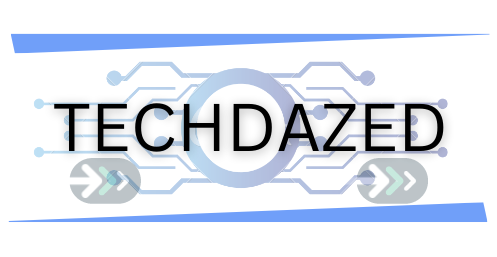The effectiveness of an advertising campaign is influenced by various factors, and one of these factors is the use of keywords. Often the way to evaluate an advertising campaign is determined by the size of the business, investment, and the amount of data we have for the research. You can’t make a study from nothing — the model has to be taught to interpret the data correctly based on the information already available. The main thing that is important to understand is where the company’s operations are taking place.
Analytical Approaches for Different Companies
For companies that operate mainly on the Internet, working with small advertising budgets, it’s important to correctly collect the “chain of touches”: a lead, reaching the shopping cart, and a purchase. In this case, it’s important to link what a person does on the Internet — how they come into contact with banners, videos, messages, etc. — with how a person comes to the site and what they do there. This chain of touches turns a site visitor into a person who performs a targeted action — a buyer. If we have thought out in advance the entire upcoming path of the client and stitched it with a certain mark, you can later track the effectiveness of the chosen advertising campaign on the trail left behind. It becomes clear how many people visited a certain site, how many of them switched from demo slots to online spiele um echtes geld, how many of them reached the purchase, and by what means, what profit they brought to the business. Based on this data, we build an attribution model that shows the most effective sites for advertising.
Large Companies With a Multi-channel Approach to Advertising
When a company uses a full media mix that includes online and offline promotion, and we need to measure the impact of each of these channels on sales, econometric methods are used. The approach we work in is called Marketing Mix Modelling.
At What Budgets Should You Start Connecting Channels for Advertising?
There is no single answer here because it all depends on the size of the business and where the business is conducted. Effective advertising can cost $300 or $5,000,000. The basic rule is to start from the goals of a particular business, its format, distribution channels, and the audience we are selling to.
For example, a small wood store can sell through marketplaces. In this case, you can join the seasonal campaign (to sell wooden Christmas tree toys in December) and invest in advertising pennies, while earning good money. For a conditional $100 you can get effective advertising within one marketplace. This option is available to any individual entrepreneur.
On the other hand, there are large companies with distribution throughout the whole country. They sell both online and offline, in huge cities and in every town. In this case, the advertising campaign must cover every corner of the country, and this can only be done with the help of television. And then we are talking about completely different budgets.
Mistakes in Advertising Campaigns
The biggest and most common strategic mistake is that newcomers get carried away with media strategy without considering the end goal. For example, a customer who produces face cream comes in and says he wants to take 20% of the entire cosmetics market. Here it may mistakenly seem that all that is needed is a large reach. But in fact, there is no guarantee that even 90% of the audience that will see the commercial will bring the desired market share. Because the cosmetics market is very fragmented, no one has had such an insane share for 20 years.
It’s important to understand the specifics of a particular product before you get started. Of course, at times like this, no one wants to admit a mistake and go to redo the advertising strategy because then you have to get into an uncomfortable conversation. Who would want to tell the customer, investor, or owner that his goals are inadequate? That’s why novice marketers have an advantage when working inside advertising agencies — there are strategic and media managers there, experts with a lot of experience.
In fact, anything can go wrong. Every stage is important. Mistakes can happen in the study of the target audience and in the UX design of the site. The purchase button is located in the wrong place, and customers don’t take the right action even with well-tuned advertising. Or, for example, advertising for car service is shown only to subway passengers.
Sometimes there are ways to correct the situation, but it requires opportunities and resources. First, it’s important to notice the problem in time — that is, constantly check with the initially set KPI and build a forecast, of whether such dynamics will get the desired result. If not, the next important stage is to make a decision to adjust the strategy. This is always a risk, as there are no guarantees that the new hypothesis will work.
Also Read : Why Are Chatbots A Great Tool For Strategically Using Marketing Automation And AI?
How to Optimize the Advertising Campaign
Use a combination of different promotion channels and plan which channels to select. There is a rule that several media channels shouldn’t work for one and the same goal — it leads to inefficient budget spending. Each media channel should solve one unique task. As a rule, it’s excessive to involve both television and digital. Therefore, if the goal is to increase audience reach, we use television more often. If local offline promotion is important, it’s enough to place outdoor advertising.
TV + Digital
But there are exceptions. For example, the combination of TV and digital is used to reduce the budget for TV advertising, to increase the frequency or to reach an audience that rarely watches TV. It works especially well if the task is to reach young people who don’t watch TV.
TV + Contextual Advertising
Often TV and contextual search work in conjunction because as soon as there is an advertisement for the whole country, search queries related to it begin to grow. It’s important to foresee this and set the necessary budget in advance because people are receptive at the search stage. Interest is already there, and the need is formed, but if you don’t show advertising in time, they will pay attention to a similar product of another company, and the contact will be lost.
Search Queries + Retargeting
Can effectively work in conjunction. A person is interested, goes to look for their request, and got distracted by something or pauses. At this point, it’s important to bring them to the purchase — once again remind them about the product, show similar options. These are the same banners that follow us and show the queries we used to search for.

